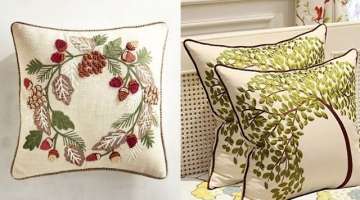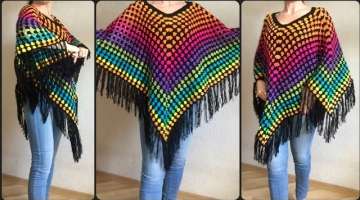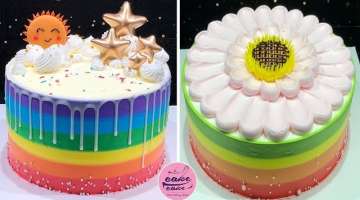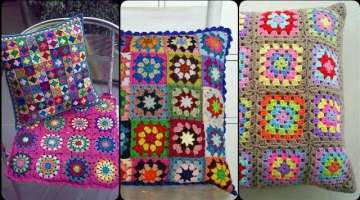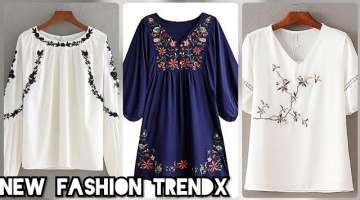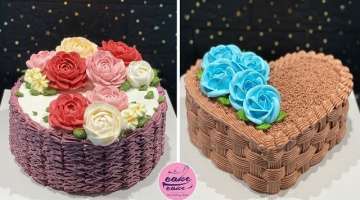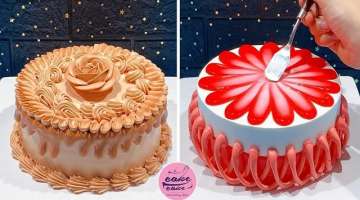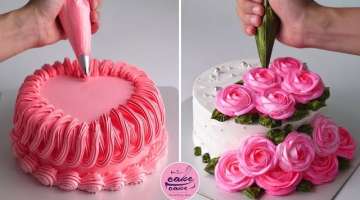The Top 16 Chicken Breeds for Your Backyard Flock
For the past couple decades, chickens have been growing in popularity as people become more interested in knowing where their food comes from, and desire to live a more natural lifestyle. But they are so much more than just egg factories. Watching chickens scratch about the yard is relaxing and de-stressing after a long day at work. Many pet chickens are extremely tame and will eat out of your hand and sit on your lap. Need more convincing that chickens are awesome?
- 1 | 22

Chickens are an easy pet to incorporate into nearly any family. They don't bark at your neighbors, they don't need to be walked, you can leave them over a long weekend without worrying while you go out of town and of course they give you all the fresh eggs you can eat. There are hundreds of breeds of chickens, so how do you decide which ones make the best pets? I will separate my top picks into excellent egg layers and poor/moderate layers. When you are keeping chickens as pets and high egg production isn't the main goal, you can add in a few of the gorgeous, ornamental breeds! These exotic birds are beautiful, but aren't usually the most reliable egg layers. Sometimes having a flock of high production breeds can be overwhelming for backyard chicken pet owners. Excellent layers can give you 5-6 eggs per week. Even with a relatively small flock of 6 chickens you are talking about 3 dozen weekly eggs. Every. Single. Week. For at least half of the year.
- 2 | 22

Barred Rock: Barred Plymouth Rocks, or just "barred rocks", are some of the sweetest, most inquisitive, quirky birds we've ever had. They are very friendly, intelligent, and great with kids. I hate to play favorites, but of the nine different chickens we have had now, Dottie and Zoey take the cake. They're the ones who always come running first, follow closest, and are most inclined to jump up for a cuddle. They also have a reputation for being talkative, but with a distinct sweet, softer coo and chatter, much different than the others in the flock. These black and white spotted cuties are steady layers of large, light brown eggs. You can expect an average of four to five eggs per week while they're actively laying. Barred rocks have a large single comb, and are both heat and cold tolerant. This breed can take well to "confinement" but are happiest when they can range freely.
- 3 | 22

Black Copper Marans or Cuckoo Marans: All of them are known to have the same great temperament. Sweet. Intelligent. Docile. Easily handled. Personally, I have a sizable soft spot for Black Copper Marans. Their bluish black iridescent feathers, copper gold neck feathers, feathered legs, and large red comb and wattles make them extremely striking, gorgeous birds. We had a Black Copper Marans named Luna. We lost her early due to a heart defect, but for the 6 months she blessed our lives with her presence, she was one of the best chickens we'd ever had. Marans are highly sought after for their dark chocolate brown eggs, which range from medium brown (blue copper), dark (cuckoo), to very very dark chocolate brown (black copper marans). They are good layers, averaging at least 3 large eggs per week. Though they're quite cold hardy, Marans aren't said to be especially tolerant to extreme heat.
- 4 | 22

Easter Eggers or Olive Eggers: Easter Eggers are usually very friendly, docile, and in our experience, maybe a tad ditzy. But what chicken isn't a little ditzy? Really. Not to be confused with a true-bred Ameraucanas or Araucanas, Easter Eggers are also commonly labeled as "Americanas". Note the difference in spelling. Certain chicken enthusiasts get very irritated by the misleading nomenclature, because the Ameraucana breed (number 5 below) is quite different. Easter Eggers can lay a rainbow of egg colors! It is most common to get green or blue eggs from Easter Egger hens, though their palette can range from pink to tan to purplish! You can eggspect at least 4 eggs per week from these gals. Easter Eggers have small peacombs, making them a good cold-hardy bird. Peacombs do not have as high of a risk of frostbite as large single-comb types. They're also known to be heat tolerant, and do not commonly become broody.
- 5 | 22

Orpington: The Buff orpington is the quintessential backyard chicken. Imagine a big ginger-blonde fluff ball lazily meandering around your yard. With a reputation of being very sweet, docile, and patient, these birds are especially good with kids. The buff color Orpington is the most common, though they come in a variety of other color plumage. Blue, Black, White… A Lavender or Jubilee Orpington is on our wish list, most definitely! Orpingtons lay medium to large light brown eggs, averaging one every other day. Due to their fluffy plumage, this breed is especially cold-hardy. Also because of their heavy stature, they're known to be less flighty once they've reached maturity. Orpingtons may go broody fairly often, and are very good mother hens.
- 6 | 22

Crested Cream Legbar or cream legbars: They are a rare breed and highly sought after for their bright blue-green eggs. They will lay about 4 to 5 medium-size blue eggs per week. And their amazing little tufted head poufs, and big floppy combs? Yeah. Pretty stinking cute. This breed is known to be very sweet and inquisitive. Some of my friends have super friendly, cuddly CCL's who love to be up-in-the-business, getting pet and being held. Our girl Phoebe is a little more skittish, but she's still a quirky, beautiful, welcome addition to our flock.
- 7 | 22

Cream Legbars are good foragers, and keen to spotting and avoiding predators when free ranging. Being on the smaller side for "large fowl", they can move quick! They are tolerant to heat, cold, and confinement. One additional awesome trait these birds have going for them is that they're auto-sexing. That means that as day-old chicks, you can easily tell the two sexes apart. So whether you're ordering from a hatchery, picking some up from a local breeder, or hatching your own eggs at home, you know what you're getting into right away! The baby males will have a light spot on the top of their head, which the females lack.
- 8 | 22

Ameraucana: Ameraucanas lay beautiful medium-size blue eggs in a wide range of shades, with an average of about 3 to 4 per week. But don't expect eggs right away from this breed. On average, this breed will "come into lay" a couple months later than other hens. When talking about their Ameraucanas, most folks say they're docile but very alert and predator savvy. Personality can vary with each unique bird – it seems they enjoy being around humans, but may be a little more on the skittish side, not necessarily enjoying cuddles as much as some chicken breeds. Plumage color ranges from blue to buff and wheaten to lavender. A lavender or blue splash Ameraucana is on my dream flock list! Like many chickens, this breed is quite cold hardy but not particularly heat hardy.
- 9 | 22

Wyandotte: They have some of the most gorgeous feather patterns out there. Gold Laced and Silver Laced are the most common plumage colors, though they also come in blue, black, partridge, and more. With humans, Wyandottes are mostly calm and friendly birds, though a little aloof. They are not necessarily "lap chickens". When it comes to demeanor around other chickens, they often rank high in the pecking order and can be bossy or even a little aggressive.
- 10 | 22

In regards to eggs, Wyandottes will lay about 4 medium-to-large light brown eggs per week. They're a heavy breed and therefore not usually as quick or flighty. With a rose comb and full plumage, they're exceptionally suited for cold climates. Like many other chicken breeds, they'll will need extra measures taken to keep them cool and comfortable in high-heat climates. They are good foragers and prefer free range.
- 11 | 22

Cochins: Cochins have a reputation for being very friendly, docile, easily-handled, and overall peaceful, good-vibes only birds. Even their roosters are known to be pretty chill. Are you surprised to hear Cochins are on our dream flock list? Probably not. And to be honest, we get way more eggs than we can keep up with from our four "strong" laying hens. I wouldn't mind some girls that lay less frequently.
- 12 | 22

Given their heavy statue and immense fluff, Cochins are very cold hardy and easy to contain with minimal fencing. They aren't aggressive foragers, and prefer the fat and lazy approach. They're not super heat tolerant, but that can be overcome with extra precautions like plenty of shade, cold water, frozen treats. In regards to colors, Cochins come in just about all of them! Buff, blue, gold laced, white, black, mottled, brown, red, and more.
- 13 | 22

Australorp: This is the Australian-origin version of the Orpington, and have many of the same qualities! Australorp plumage can be blue, black, or white. I personally think the black is the most stunning, with an iridescent green, blue, and purple sheen in the right lighting. This breed is well-known for their high-volume egg laying abilities. Several world records for most number of eggs per year were set by Australorp hens. They will lay an average of 5 large light brown eggs per week. On the whole, Australorps are very docile, sweet, and friendly. Some may be a tad shy. Fluffy and large, these birds have great cold hardiness. As you can imagine, being that they originated in Australia and are very popular birds there, they are also quite heat tolerant.
- 14 | 22

Silkies: Silkies are bantam, mini chickens that have fluffy, fur like feathers, making them feel more like a cat than a chicken. They have feathered feet, feathered crests, they often just look like a round puff ball. They are also very calm and friendly. Well known for their mothering abilities, they will spend a lot of time being broody which can cut down on their laying, but they will hatch and mother pretty much any kind of egg you give them. When they are laying, you can expect 3-4 small eggs per week. Silkies come in a large variety of colors including white, buff, black, blue, brown Partridge, & mixes. A great choice for families with kids, children always love these friendly, tiny, fluffy birds.
- 15 | 22

Polish: Have you seen those adorable birds with pom-poms of feather afros on the their head? That's a Polish. They are ridiculously adorable. The head pouf can be so full that it might need to be routinely trimmed or pulled back into a "hen bun" to help the birds otherwise impaired eyesight. Like Cochins and Silkies, this is a breed that is more sought after for appearance and cute-factor than egg production. They will lay medium to large white eggs, up to several per week. However, they are known to have more variation in laying frequency and therefore less dependable, if eggs are what you're looking for. They are not known to go broody much.
- 16 | 22

They are probably one of the most unusual looking chicken breeds, everyone loves the looks of these guys. Polish chickens have huge poofs of feathers on their head and many have beards as well. Polish are friendly and quiet. They will almost always be at the bottom of the pecking order due to their docile nature, which makes them great pets, but keep an eye on them to make sure your other chickens aren't picking on them. Their feather head poofs can get in the way of their vision, making them a little skiddish if you approach them from their blind spots. A couple times per year, we trim the feathers in their field of vision and that helps calm them down a bit. My Polish girls are some of the first to greet me and remind me of my cat because they always seem to be under my feet, weaving between my legs lol. They are not great egg layers, but will lay 2-3 smallish-medium size white eggs.
- 17 | 22

Speckled Sussex: These chickens are curious, mild-mannered, and will probably follow you all over. As heavy dual-purpose birds, these chickens aren't as prone to flying once they mature to full size, so they're a little less likely to hop the fence into your garden! After each molt, they can become increasingly speckled and pretty. Add one of these to our future "I want you" list. Speckled Sussex lay about four light brown eggs four per week. They're likely to lay through the coldest of winter weather. Speaking of winter, this breed is a good cold-hearty breed too. They aren't necessarily heat sensitive, but also are not know to be exceptionally heat tolerant either.
- 18 | 22

Mille Fleur d'Uccle: In French, Mille Fleur means "thousand flowers." This is probably in reference to the hundreds of little black and white flower petal-looking dots that cover these gorgeous, unique birds otherwise-orange feathers. In addition to the speckles, they have full beards and fluffy feathered feet. Millie Fleurs are very attractive-looking, sweet, calm, and enjoy being handled. Combined with their huge personalities, they are perfect pets as well as popular show birds. They're only available as bantams.
- 19 | 22

Egg production isn't their strong suit, laying just a few very small white eggs per week. Because they are small and light, they do well in heat. This also means they're excellent fliers, so take that into consideration when you are planning their run or ranging space. Keeping them in a flock with larger, more assertive birds may be problematic, similarly to Polish or Silkies. A Millie Fleur has been on my "I want you" list for a long time.
- 20 | 22

Brahmas are huge sweethearts. Truly gentle giants, Brahmas are big birds with calm, loving personalities. In addition to their large size, they have profuse feathers and feathered feet. They have small pea combs so are less prone to frostbite and coupled with their large size, make them a great choice for northern chicken keepers. They come in three color varieties: light (white with black around neck, tail and wing tips), dark (grey/brown feathers with lovely black penciled outlines) and buff (a warm, golden color with black around neck, tail & wings). In addition to their beautiful appearance and sweet personality, they are great layers. You can expect 5-6 large brown eggs per week.
- 21 | 22

Buff Laced Polish Hen: Buff Laced Polish are very rare breed of chickens. Polish chickens are a European breed known for their distinctive crests, or "top hats." Polish chickens are gentle and docile, but their crests can limit their vision making them timid and easily startled. These birds have rich, golden buff feathers neatly laced in creamy white, and dainty slate blue shanks and toes. The flowing crests and sprightly carriage make them one of the most prized breeds. Buff Laced Polish hens are good, productive white egg layers and rarely go broody and non-setters. Day-old baby chicks are a creamy buff color with a dark tan mark over each eye.
- 22 | 22

Silver Sebright Rooster: The Sebright chicken is a small but dynamic bird. It enjoys an almost 'cult' following of dedicated breeders and keepers. This pint-sized bird is beautiful to look at and can easily fit in the palm of your hand. It is a product of one man's imagination and his quest to create something different in the poultry world. The fact that it is named after its creator is a testament to the dedication he put into his vision. It took him over 20 years to create the Sebright bantam.
